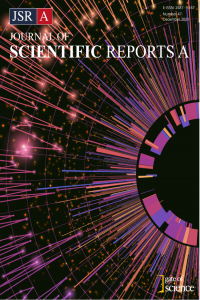Abstract
References
- [1] Watanabe R. and A. Kawaski, (1987), “Powder Metallurgical Fabrication of the Thermal Stress Relief Type of Functionally Gradient Materials,” Sintering, Elsevier, Tokyo, Vol. 2, pp. 1197-1202.
- [2] Schubert T., Weibgarber T., Kieback B., Balzer H., Neubing H. C., Baum U. and Braum R., (2005), “Aluminum PM is a Challenge That Industry Can Overcome,” Metal Powder Report, Vol. 60, No. 3, pp. 32-37.
- [3] Mahmoud M. Nemat-Alla, Moataz H. Ata, Mohamed R. Bayoumi, Wael Khair-Eldeen, (2011), Powder Metallurgical Fabrication and Microstructural Investigations of Aluminum/Steel Functionally Graded Material, Materials Sciences and Applications, 2, 1708-1718.
- [4] Mehboob H, Chang SH., (2014), Evaluation of the development of tissue phenotypes: Bone fracture healing using functionally graded material composite bone plates, Compos. Struct. 117, 105–113.
- [5] Koizumi M. (1997), FGM activities in Japan, Compos. Pt. B Eng. 28, 1–4.
- [6] Muller E, Drasar D, Schilz J, Kaysser WA., (2003), Functionally graded materials for sensor and energy applications, Mater. Sci. Eng. A 362, 17–39.
- [7] Ilschner B., (1993), Structural and compositional gradients: basic idea, preparation, applications, Le J. Phys. IV, 03, C7-763–C7-772.
- [8] Bharti I, Gupta N, Gupta KM., (2013), Novel Applications of Functionally Graded Nano, Optoelectronic and Thermoelectric Materials, Int. J. Mater. Mech. Manuf. 1, 221–224.
- [9] Jha DK, Kant T, Singh RK., (2013), Free vibration response of functionally graded thick plates with shear and normal deformations effects, 96, 833–849.
- [10] Xu CH, Wu GY, Xiao GC, Fang B., (2014), Al2O3/(W,Ti)C/CaF2 multi-component graded self-lubricating ceramic cutting tool material, Int. J. Refract. Metals Hard Mater. 45, 125–129.
- [11] Ichim PI, Hu X, Bazen JJ, Yi W., (2016), Design optimization of a radial functionally graded dental implant, J. Biomed. Mater. Res. – Pt. B Appl. Biomater. 104, 58–66.
- [12] J.R. Cho, J. Tinsley Oden, (2000), Functionally graded material: a parametric study on thermal-stress characteristics using the Crank±Nicolson±Galerkin scheme, Comput. Methods Appl. Mech. Engrg., 17-38.
- [13] K.S. Ravichandran, (1994), Elastic properties of two-phase composites, J. Am. Ceram. Soc. 77 (5) 1178-1184.
Abstract
In this study, determined amount of powder (Al-Al2O3 and Cu-Steatite) by weight are mixed homogeneously with 3-D shaker and then pressed to obtain FGM. Mixture ratios by weight vary from 80 % Al - 20 % Al2O3 to 20 % Al - 80 % Al2O3. Same mixture ratios are also prepaired for Cu-Steatite. For both of the mixtures, maximum ratio of metal (Aluminum and Copper) stay in the core while maximum ratio of ceramics (Al2O3 and Steatite) at the outer. Powder mixtures are passed through Hall funnel and appearant densities of them are calculated. Appearant density of Al-Al2O3 mixtures varies from 1.184 gr/cm3 to 1.344 gr/cm3 while it varies from 1.04 gr/cm3 to 2.352 gr/cm3 for Cu-Steatite mixtures. Aluminum tubes at successive diameters are placed into the cylindirical die of 32 mm diameter to seperate the different regions in the die before pressing. Each layer between the tubes corresponce to a different ratio of homogeneous mixture. Zinc stearate lubricant at the amount of 1% of each mixture by weight is added into each mixture before pressing. Pressing pressure varies from 700 MPa to 750 MPa. FGM specimen prepared from Al-Al2O3 mixture is sintered at 630 0C for 90 min and the one from Cu-Steatite 1030 0C for 60 min.
References
- [1] Watanabe R. and A. Kawaski, (1987), “Powder Metallurgical Fabrication of the Thermal Stress Relief Type of Functionally Gradient Materials,” Sintering, Elsevier, Tokyo, Vol. 2, pp. 1197-1202.
- [2] Schubert T., Weibgarber T., Kieback B., Balzer H., Neubing H. C., Baum U. and Braum R., (2005), “Aluminum PM is a Challenge That Industry Can Overcome,” Metal Powder Report, Vol. 60, No. 3, pp. 32-37.
- [3] Mahmoud M. Nemat-Alla, Moataz H. Ata, Mohamed R. Bayoumi, Wael Khair-Eldeen, (2011), Powder Metallurgical Fabrication and Microstructural Investigations of Aluminum/Steel Functionally Graded Material, Materials Sciences and Applications, 2, 1708-1718.
- [4] Mehboob H, Chang SH., (2014), Evaluation of the development of tissue phenotypes: Bone fracture healing using functionally graded material composite bone plates, Compos. Struct. 117, 105–113.
- [5] Koizumi M. (1997), FGM activities in Japan, Compos. Pt. B Eng. 28, 1–4.
- [6] Muller E, Drasar D, Schilz J, Kaysser WA., (2003), Functionally graded materials for sensor and energy applications, Mater. Sci. Eng. A 362, 17–39.
- [7] Ilschner B., (1993), Structural and compositional gradients: basic idea, preparation, applications, Le J. Phys. IV, 03, C7-763–C7-772.
- [8] Bharti I, Gupta N, Gupta KM., (2013), Novel Applications of Functionally Graded Nano, Optoelectronic and Thermoelectric Materials, Int. J. Mater. Mech. Manuf. 1, 221–224.
- [9] Jha DK, Kant T, Singh RK., (2013), Free vibration response of functionally graded thick plates with shear and normal deformations effects, 96, 833–849.
- [10] Xu CH, Wu GY, Xiao GC, Fang B., (2014), Al2O3/(W,Ti)C/CaF2 multi-component graded self-lubricating ceramic cutting tool material, Int. J. Refract. Metals Hard Mater. 45, 125–129.
- [11] Ichim PI, Hu X, Bazen JJ, Yi W., (2016), Design optimization of a radial functionally graded dental implant, J. Biomed. Mater. Res. – Pt. B Appl. Biomater. 104, 58–66.
- [12] J.R. Cho, J. Tinsley Oden, (2000), Functionally graded material: a parametric study on thermal-stress characteristics using the Crank±Nicolson±Galerkin scheme, Comput. Methods Appl. Mech. Engrg., 17-38.
- [13] K.S. Ravichandran, (1994), Elastic properties of two-phase composites, J. Am. Ceram. Soc. 77 (5) 1178-1184.
Details
| Primary Language | English |
|---|---|
| Subjects | Engineering |
| Journal Section | Research Article |
| Authors | |
| Publication Date | December 31, 2021 |
| Submission Date | August 12, 2021 |
| Published in Issue | Year 2021 Issue: 047 |

